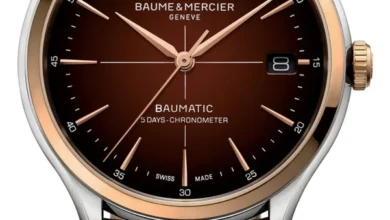
Indian ethnic wear depicts the rich cultural history of the country and Indian lehengas have a major role to play in depicting the distinctive Indian culture and tradition. Each region has its unique style, technique, and design, making lehengas an essential part of various celebrations, especially weddings and festivals. Let us have a look at some of the famous lehengas from different parts of India that highlight the exquisite craftsmanship and enriching culture of different parts of India.
Banarasi lehenga from Uttar Pradesh

The Banarasi lehenga, which originated in Varanasi, also known as Banaras, is renowned for its opulent and royal appearance. Not just its sarees, the lehengas are also immensely popular among the brides, particularly in northern India and some parts of eastern India because of their timeless appeal which they get from the intricate zari embroidery in gold and silver, well crafted on a luxurious silk fabric. The motifs, which include floral patterns, jali work, and paisleys, are frequently influenced by Mughal designs and provide a refined grandeur. The fabric is a popular option for wedding clothing since it is sumptuous but lightweight. Due to the growing popularity of the Indian fusion wear, the Banarasi lehengas are also getting the Indo western touch.
Bandhani lehenga from Rajasthan and Gujarat

The colourful and vivacious Bandhani lehenga is a garment that originated in Gujarat and Rajasthan. The Bandhej or the Bandhani technique is a tie dye method in which the tiny pieces of cloth are tied and dyed to create intricate designs. The characteristic dot patterns stand for custom and cultural importance. Bright colours like red, yellow, green, and blue are common in bandhani lehengas, which makes them perfect for festive occasions. These lehengas are cosy and light, and their ethnic appeal is enhanced when they are worn with dupattas and cholis (blouses) with mirror work.
Ghagra choli from Rajasthan

Ghagra choli is the symbolic representation of the cultural history of Rajasthan. This clothing, which is popular for its vivid hues, ornate decorations, and traditional mirror and patchwork, is frequently worn to weddings and events like Navratri. The choli’s intricate embroidery and mirror work contrast with the ghagra’s broad, flared silhouette, which allows for maximum mobility. The unique style of the Rajasthani ghagra choli exudes vivid, colourful aesthetics that flawlessly encapsulate the essence of the state’s culture.
Kanjeevaram silk lehenga from Tamil Nadu

The Kanjeevaram silk lehenga, which is a replica of the classic Kanjeevaram saree in terms of designs, motifs and patterns, embodies the best weaving customs in Tamil Nadu. Distinguished by its deep, glossy material and elaborate gold zari embroidery, the Kanjeevaram silk lehenga exudes elegance and classic style. It is true that the South Indian brides select the classic Kanjeevaram sarees for their weddings, however, the lehenga’s rich texture and lustrous feel and the grace and durability of the drape is making them choose this attire for the D day. Peacocks, elephants, and temple borders are common motifs that lend an air of grandeur.
Phulkari lehenga from Punjab

Punjab’s traditional handicraft is vividly and colourfully represented by the Phulkari lehenga. Phulkari, which means “flower work,” is distinguished by its vibrantly coloured silk threads used for floral embroidery. The entire lehenga is designed with colourful floral or geometric patterns and motifs, thus, giving the outfit a vibrant and exquisite appearance. Therefore, this lehenga is mostly preferred in weddings and festivals so that the charm and charisma is maintained throughout the celebration.
Paithani lehenga from Maharashtra
Who does not know the famous Paithani saree from Maharashtra? These days, the Paithani lehengas are making the noise everywhere with their intricate motifs and patterns, similar to the ones found in the Paithani sarees. Paithani lehengas are mainly found in intricate zari embroidery and handwoven silk fabric. The designs found on these lehengas feature lotuses, peacocks, and other traditional motifs in contrasting colours. They are designed on luxurious silk fabric, and depict complex motifs and patterns. They are mainly worn in festivals, parties and weddings because they exude royalty and elegance. Just like the sarees, the Paithani lehengas are also used as a family heirloom which is passed down to the next generations.
Patan Patola lehenga from Gujarat
The exquisite hand-woven Patola lehenga from Patan, Gujarat, is a work of art. A unique technique of double ikkat is used to weave the complex geometrical patterns on the luxurious fabric. These lehengas, just like the Patola sarees, highlight the ancient weaving skills and craftsmanship. This is what makes them a unique Indian attire, and in this way they find their top position in the fashion industry. The usual motifs on these lehengas are diamonds, flowers, parrots, and elephants. Owing to the intricate weaving technique, Patola lehengas are extremely valuable and frequently regarded as a status symbol.
Chikankari lehenga from Lucknow

The exquisite hand-embroidered work of the Lucknow Chikankari lehenga is what makes it unique. Chikankari lehengas are mainly known for their unique, intricate detailings. The best part about these lehengas is that they are mainly found in pastel shades which not just give you a glamorous appeal, but also go well with the current trend. The delicate yet refined finish is achieved by the white thread embroidery on sheer materials like georgette or muslin. Because of their comfy and lightweight fabric, these designer lehengas are perfect for daytime festivities and Summer weddings.



